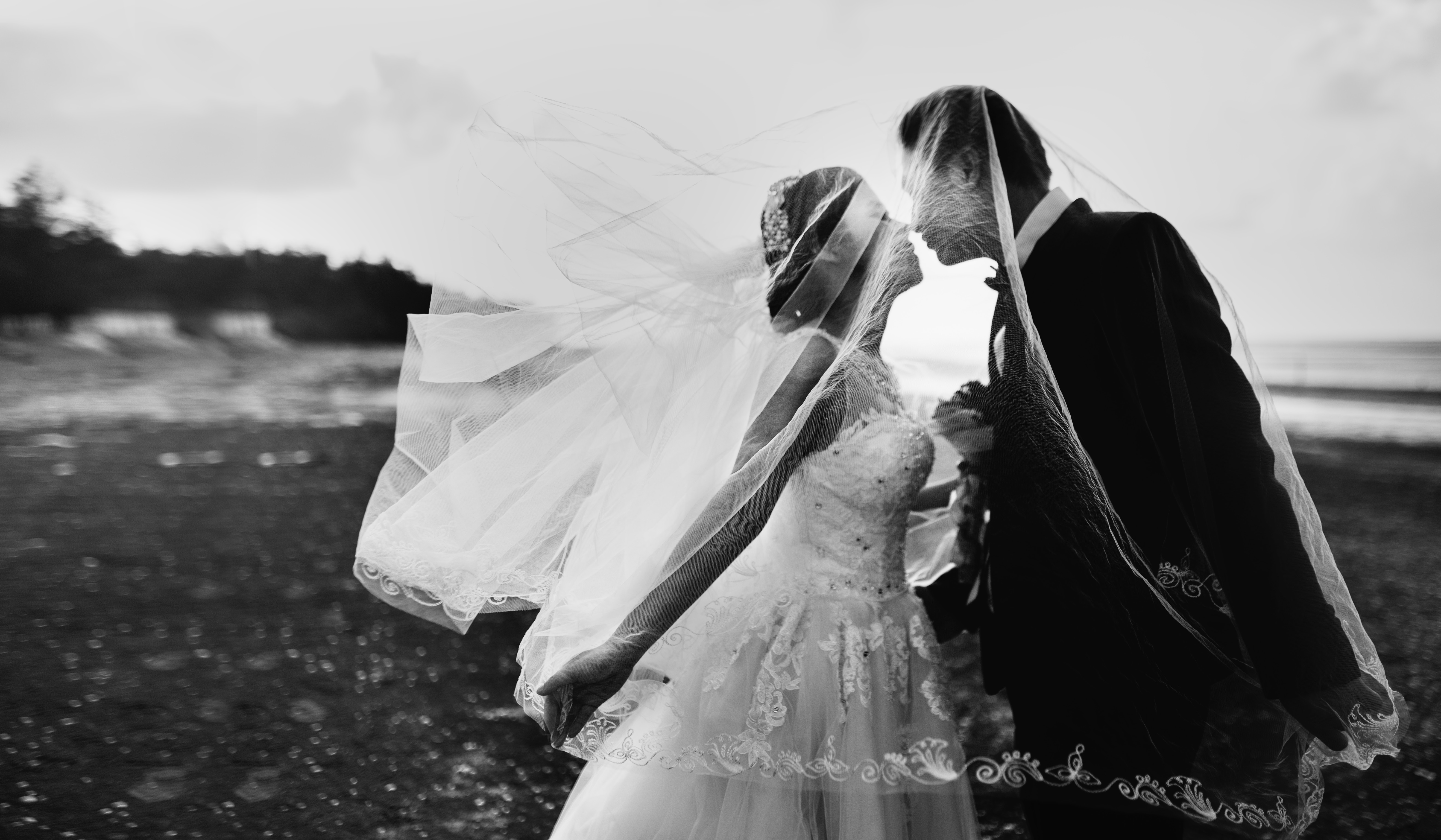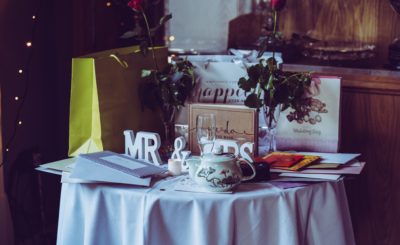Do you need a photographer for your wedding?
Our answer is pretty unambiguous. Yes.
A lot of people wonder if the huge number of cameras and cellphones pointed at you by your guests will achieve similar results to a designated photographer. In general, unless you have impeccable crowd control skills, the subjects of the photo will each look at a different camera and nobody will capture the pose of everyone in the shot. Additionally, a designated photographer is there only to take photos. They aren’t also looking to chat to Aunty May, or find another of those excellent prawns. They have a little more scope in terms of being freely able to take some shots from behind the bride walking to the groom, then nip round and reappear at the front to capture a front shot or two of the bride walking toward the groom. Not many of the guests will be confident (or allowed) to do this.
Note that we’ve said designated photographer rather than professional. By and large, we mean professional. Photographs are one of the few tangible things (other than lifelong love and commitment) you will have to remember your wedding by, so a great collection of photos could be arguably more important than many of the other details. Not all budgets will stretch to this, so if you are struggling to afford a photographer for the entire duration, DESIGNATE ONE PERSON to be in charge of capturing your shots. Or two. But this is a big ask for them. You are essentially asking them to do something which would usually cost thousands of dollars. So ask them if they’re willing and able, and ensure they understand what you expect from them well in advance of the day. Also make sure they have a backup camera and a lot of spare memory cards. And talk through the issues we discuss below with them too. It’s really important to make sure they understand what images you really really hope to get.
Browse
First, browse online. Find local photographers. Also feel free to find ones nowhere near you who show their work online. You might find the album of someone you can use as a “benchmark” with which to compare your options. Once you’ve found some local photographers, it’s time to review their work. This is crucial. There’s no point spending all this money (and inviting someone to join you for some very private moments, and take you away from your guests and celebration for a potentially lengthy portion of time) to then find that the photos they produce are not what you had in mind.
Arrange a meeting
Look at what they showcase on their website, but then arrange to meet with those who look “potentially great”. Before you meet with them, get some nitty gritty discussed, including ballpark costs, and availability.
Make a shortlist of “must haves” you think are vital, which may include “the bride and her father walking together down the aisle”, “the moment he puts a ring on her finger”, “the guests raising their glasses during a toast” etc.
Meeting the photographer
When you meet with the photographer, do a few things. Ask to see some entire albums. This way you really see what they do, rather than just a selection of their very best images from all the weddings they ever photographed. Check and see if your “must have” list of iconic images are there often enough for you to be comfortable that those shots won’t be missed in your wedding. Do they appear to capture the emotions of the day, some really impressive portraits? Do they have a style similar to what you had imagined or hoped for? Are the photos well lit, suitably composed (with no rubbish bins or drunken aunties swaying in the background), and crisp? Is the editing natural? Some photographers insist on overediting otherwise well taken photos. This may suit you, but it may be that in a few years you no longer want blurry or pink wedding photos. The majority of photos you review should be excellent, but natural in appearance. There’s scope for further editing from them afterward, but excellent shots initially are vital.
Talk about what you get. Do you have full access to all digital images? This is the key. Many photographers charge more for printed or framed images, or whole albums, but if you don’t have ongoing access to the images you can’t later print more, or send copies to Aunt Esmerelda, or update faded versions (or worse, damaged/lost images). How long do they plan to come for? What do they typically stay for (in terms of the getting ready scenes, ceremony, photo session, speeches, meal, dancing etc.). Do they use more than one photographer, and if not, how do they manage scenes such as the bride getting ready as well as the groom waiting anxiously, and the view from each end of the aisle? Some will have a second photographer who comes just for those certain times, make sure you have a look at both photographer’s work to see if the second one is worth the extra money. Do they have insurance?
During these meetings, you will get a sense of whether you can get along with this person. They will be with you as you prepare for the ceremony, a nerve wracking time for most couples, but also quite a poignant time, just before you enter the next phase of your relationship and your life. Make sure the photographer and their terrible jokes or moody demeanour aren’t the only thing you’ll remember about these special times. You also want to feel comfortable enough with them to tell them if something isn’t what you want. One of our team has about 15 photos of their perfume bottle but no really good photo of her with her mother because she wasn’t comfortable enough to speak out and say “no, I am most certainly never going to print a photo of my perfume, please stop taking those shots”.
Before the big day
Once you’ve settled on the photographer who will take those keep-forever shots of you, communicate with them. If there are particular scenes or groups or images you really really hope they’ll capture, tell them! This seems obvious, but really talk together about what you might want to capture, and then browse other online collections to see if there are any classic images or special shots you might like to add to the list. Send them copies if you like, and at a minimum make a small list they can have with them on the day of your “must haves”. This will also include any family or friend groups you hope to have captured, so that someone other than you can help collect groups, eg “all the Smiths”/”all the siblings”/”all the work friends and their families” etc, while other group shots are composed. Also share details of the venue with them. If you really want a photo by the lake, let them know. If you love love love the old wooden staircase, tell them. There may be preparatory work in terms of lighting or composition which is improved significantly by you telling them in advance what you want.
Our other word of advice regarding the photographer is to prepare your family for what to expect. If a few family members are prepared with what you want photographed, they can assist with the logistics on the day. Make sure more than one person knows who is in each group photo, so they can help find the appropriate people at the right time, keeping the photo session as brief as able.
On the Day
Relax. The best wedding photographs come when a couple are relaxed, enjoying their day. The “best shot” which ends up on the wall is often not one of the ones you had planned in advance. It’s the chance capture of two people glancing at each other with joy.
So to summarise:
- Browse local photographers
- Check availability and costs
- Write out a list of “must have” shots
- Meet photographers
- See whole albums
- Review what they capture, style, quality of photography
- Check what you get
- Make sure you get along
- Create and share a list of must have shots as well as composition of group shots. Make sure family member has these lists as well as photographer.
- Relax

